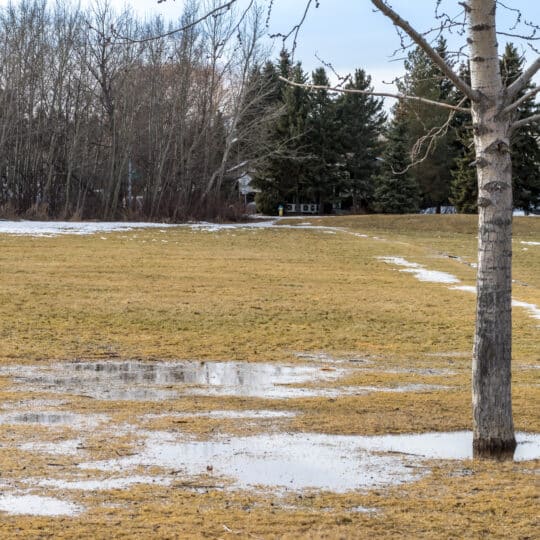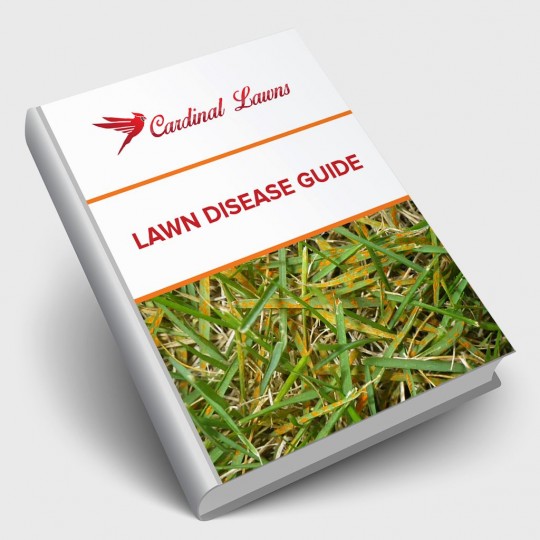Dead vs. Dormant Grass
Identify & Rectify
Posted
March 2, 2023

Since it’s still technically dormant season for many types of grasses, you could be looking outside and seeing a lot less green. If you’re wondering if this is normal, here are some tips on telling if you’re dealing with dead or dormant grass.
Dead vs. Dormant Grass
Dead and dormant grass have many similarities.
- It doesn’t grow
- It’s brown
- It looks dry
Being able to tell this difference between dead and dormant grass will help determine what efforts are needed to bring your lawn back to life. Otherwise, you could be treating a problem that doesn’t exist, thus harming your grass even more.
The Truth About Dormant Grass
Why does grass go dormant? When does it happen? When will it bounce back? Here are some facts about dormant grass and what to do about it.
- Not actively growing.
- Protecting itself from harsh weather conditions in the winter and summer.
- More energy going into root preservation which is why the crowns may turn brown.
- Doesn’t lift easily or bounce back when stepped on (so try not to step on it).
- Roots are still alive and are white in color.
- Livens up when watered.
- Too much thatch can stress grass out, causing it to go dormant. Remove any thick layers.
- May be brown now but will brighten back to green in the spring or fall (if it doesn’t, it may be dead).
If your grass still doesn’t bounce back or the roots are dark, you may be dealing with dead blades.
Identifying Dead Grass
While lawns may look dead in harsh weather, it doesn’t mean major reseeding is needed, unless you’re dealing with these other issues.
- Fungus. Overwatered lawns that are compacted with poor drainage is a prime environment for mold.
- Disease. Mold is one cause of disease, but an insect infestation, poor fertilization, and irregular mowing can also cause disease.
- Pests. Larger animals can dig at your grass looking for food or shelter, especially if your lawn is infested with grubs.
- Drought. Not enough water can lead the lawn to dehydrate and burn in the sun.
- Weeds. Poor soil and bare grass spots invite weeds to move in and take over.
- Debris. Sticks, rocks, leaves, and other seemingly natural items can actually suffocate the grass.
- Animal urine. Wildlife and domestic animals can kill the grass over multiple potty breaks in the same spot.
Here are some signs your grass is more dead than dormant.
- It lifts out of the ground easily
- Watering doesn’t help
- Insect infestation
- Blades are black, white, or pink
- Roots are dark
- The ground is spongy
Preventing Grass From Dying
While you can’t help your grass from naturally going dormant, you can help prevent it from dying.
- Proper irrigation. Aerate your lawn to combat compaction. If you see pools of water around your lawn, focus on those areas.
- Water schedule. Know how much water your grass needs and the best time to water it.
- Mowing schedule. Only mow when your grass needs it. Don’t cut it too short or it will stress. Keeping it too long invites disease.
- Fertilizing. Feed your lawn in the spring or fall to help keep it lush and healthy.
- Attention. Keep an eye out for signs of any infestation or animal activity.
- Debris-free. Clean up any leaf piles, broken branches, and other debris. Clear any lawn furniture in the extreme weather months.
If you’re still wondering about the current state of your lawn, contact a lawn care specialist at Cardinal Lawns for an evaluation. Properly identifying dead or dormant grass makes it easier to determine what it needs and when and keep it thriving in any season.

Download Your FREE Lawn Disease Guide
Even the most manicured landscapes are susceptible to lawn disease. Take some time to learn about identification and removal before one takes over your lawn. This handy guide teaches you how to spot common lawn diseases as well as how to properly treat them.